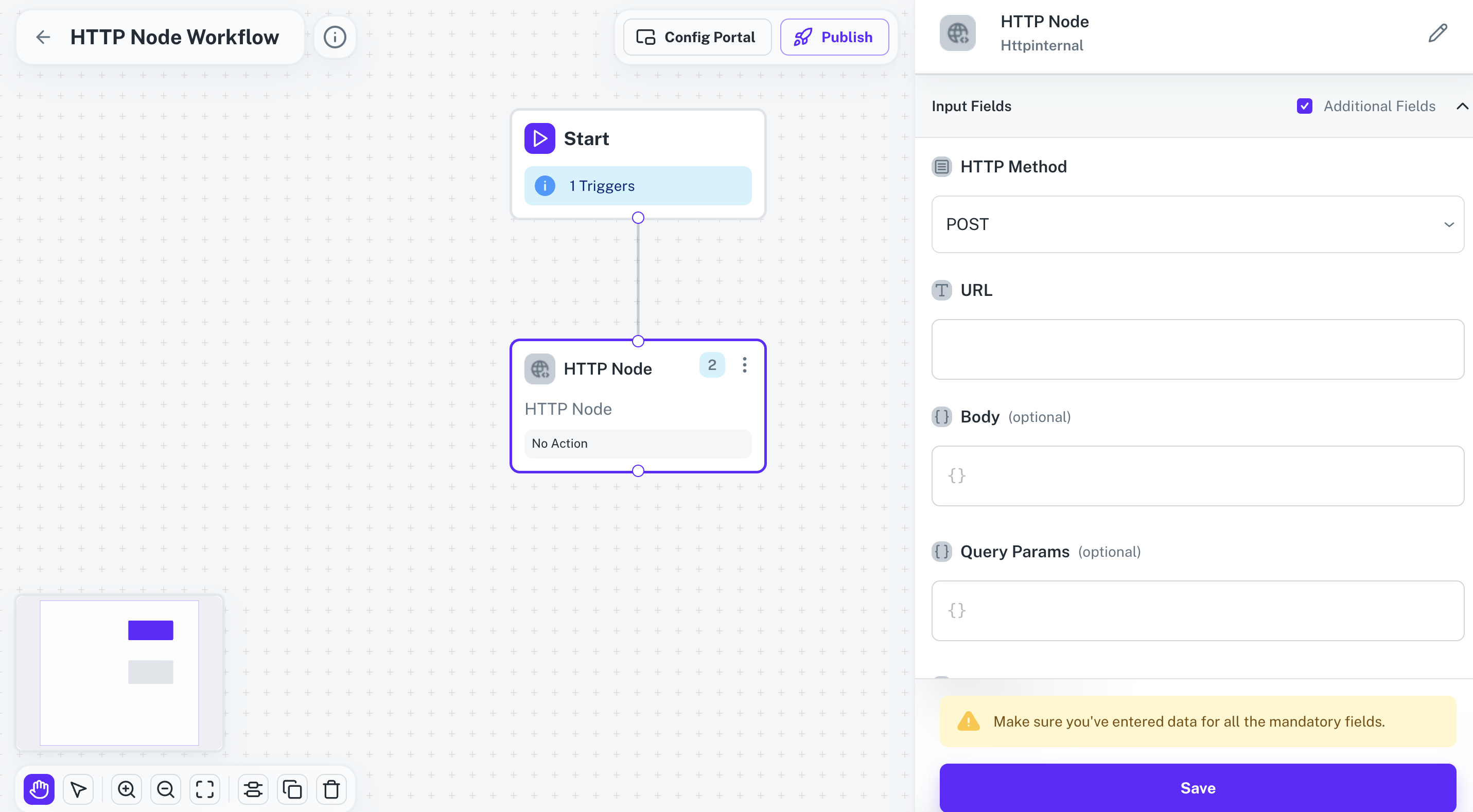Nodes
HTTP Node
The HTTP Node in Cobalt is designed to make HTTP requests to the external APIs in the workflow. This node simplifies the workflow by allowing you to create direct HTTP requests.
 By utilizing the HTTP Node, users can efficiently manage API interactions within the scope of the integration.
By utilizing the HTTP Node, users can efficiently manage API interactions within the scope of the integration.

Node Functionality
HTTP node is like an external API call function within the workflow. It can:- Call an API of your system in workflow; &
- Call an API with dynamic params values from other nodes;
Steps to Use HTTP Node
The HTTP Node is configured to interact with the APIs of the integration that the workflow is based on. Here’s how to set up and use the HTTP Node:1
Add the HTTP Node
In your workflow, drag and drop the HTTP Node from the list of available nodes.
2
Configure the HTTP Request
Once the HTTP Node is added, configure the request details like
Method, URL, Body etc. to match the API of the integration.